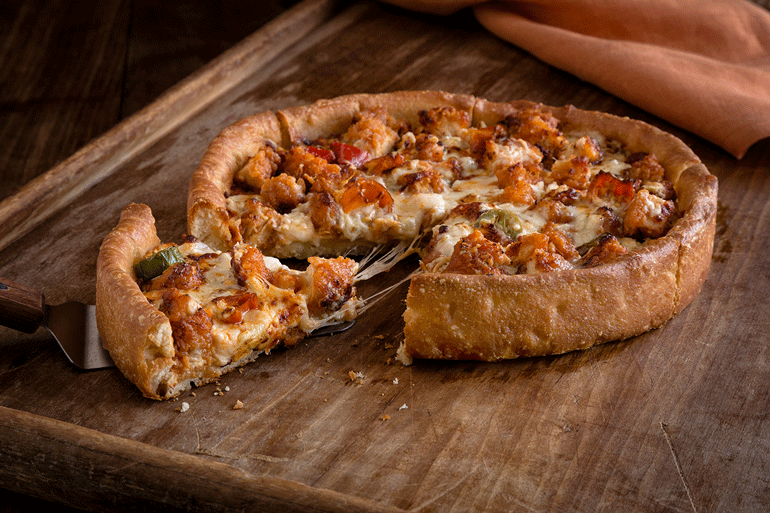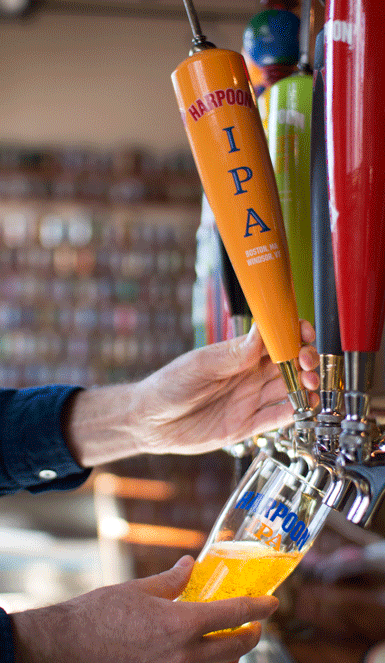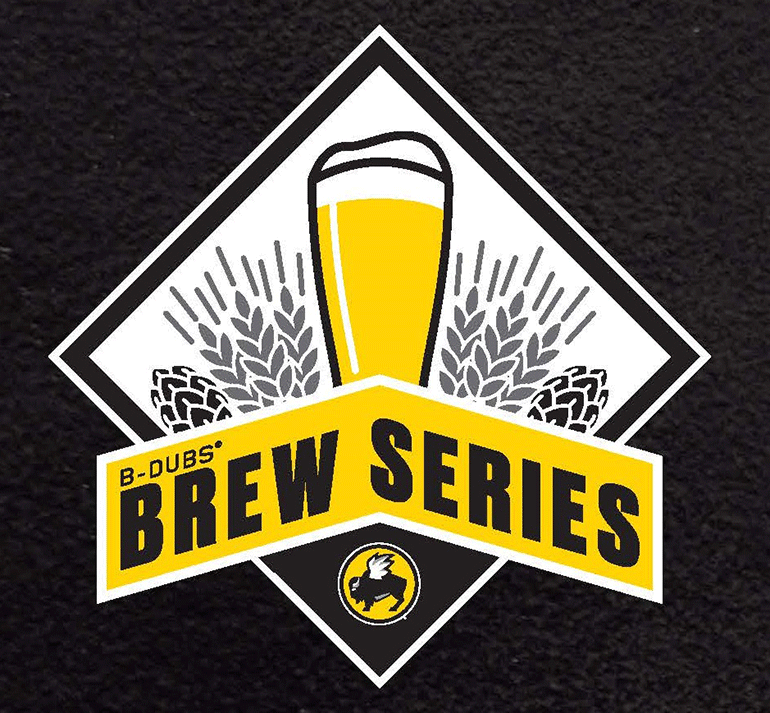Craft beer, now comprising 23.4 percent of market share in the United States in dollar terms, according to the Brewers Association, is no longer a niche beverage category by any means.
The trade association representing small and independent American craft brewers said their category saw a 5 percent rise in volume 2017, even as the total beer market dropped by 1 percent in volume.
Casual dining chains — a segment that saw sales growth of less than 1 percent in 2016, according to Nation’s Restaurant News Top 200 data — have taken notice by improving staff training, broadening their options and empowering local staff to work with local brewers.

Boston-based Uno’s Pizzeria & Grill relaunched both its food and drink menu last October to focus on the craft of its pizza and beer, and its heritage as the creator of deep-dish pizza when it was founded in Chicago 75 years ago.
Uno’s president and CEO Louie Psallidas said he hoped the change would give the chain a point of differentiation, which he said is lacking at many casual dining chains.
He said craft pizza and craft beer had a “logical adjacency,” and that the craft messaging is in line with what consumers are looking for.
 The new beer menu now is more than 50 percent craft beer, and Psallidas said the chain no longer buys large volumes of kegs, but instead purchases small batches with frequently rotating options.
The new beer menu now is more than 50 percent craft beer, and Psallidas said the chain no longer buys large volumes of kegs, but instead purchases small batches with frequently rotating options.
Users of the Uno’s Untapped app, are alerted each time a keg is changed at their chosen location. The beer menu is also automatically reprinted and the change is also announced via social media.
“It’s a very integrated, one-click approach to communicating with the outside world when a new keg goes on,” Psallidas said.
Uno’s chief operating officer Bill Golden said the chain began its craft-beer upgrade around a year and a half ago by increasing the number of taps at its 63 domestic locations from 10-12 to 12-15.
Now the menu includes “Go to Faves” — large domestic national brands such as Coors and Budweiser — as well as “everyday craft” beers from breweries with national distribution such as Sam Adam’s and Goose Island, that are available systemwide.
Then there are “rotating craft” selections that vary from restaurant to restaurant and GM’s Choice of a beer on tap.

“It allows the general manager in a specific restaurant to really get hyper-local and understand the emerging brands, breweries — what the trends are in their market — and go out there and get that on tap for their guests,” Golden said.
In preparation of the menu launch, about 150 people in management, from general managers on up to Psallidas himself, became Level 1 cicerones — or certified beer professionals, like sommeliers, but for beer.
“We spent a tremendous amount of time really focusing on teaching our employees the inner workings of craft beer and what makes up the different styles,” Golden said. “So they’re confident — we like to call it ‘beer swagger’ — and to us beer swagger is all about giving the guest-facing employee the confidence which comes from knowledge, and once they have the knowledge and confidence they feel very comfortable engaging in the craft-beer dialog with the guest and explaining the different styles and offering samples.”
 Golden said the result of the change has been more sales of craft beer, which though they have a higher pour cost are more profitable in terms of gross margins, as well as happier staff.
Golden said the result of the change has been more sales of craft beer, which though they have a higher pour cost are more profitable in terms of gross margins, as well as happier staff.
“And the organization is having fun with this,” Psallidas said. “Pizza and beer is just fun.”
That has been recorded in an uptick in satisfaction, based on quarterly evaluations from the chain’s roughly 3,000 hourly employees.
“We saw a substantial and material improvement of overall job satisfaction,” Psallidas said. “It’s just a fun by product of this.”
Minneapolis-based Buffalo Wild Wings has also been upgrading its beer program. Andrea Schwenk, who has been the chain’s beverage director for the past year-and-a-half, said that when she arrived the restaurants were treating beer drinkers like they were all the same.
“As the beer industry has become a lot more fragmented and there’s more choice than ever before, we’re coming to realize that beer drinkers are not a one-size-fits-all target demographic, and that there are nuances with how they consume beer,” she said.
She said consumers of mainstream American lagers tend to be price-sensitive, sports-focused, and not necessarily interested in trying anything new. To reach them, the chain carries out sports- and price-related promotions.
But while some guests just want something cold and inexpensive to go with their wings, others are “on a bit of a beer journey,” she said. They’re looking for new varieties, “and we want to be able to meet them where they are and perhaps introduce them to something new.”
 On average, each of Buffalo Wild Wings’ more than 1,200 domestic locations has 30 tap handles with a variety of “domestic” — or mainstream American lagers — craft and imported brews. While some of them are the same across the board, Schwenk allows for local and regional variation, allowing general managers and regional managers to work with local and regional breweries.
On average, each of Buffalo Wild Wings’ more than 1,200 domestic locations has 30 tap handles with a variety of “domestic” — or mainstream American lagers — craft and imported brews. While some of them are the same across the board, Schwenk allows for local and regional variation, allowing general managers and regional managers to work with local and regional breweries.
“We go to a lot of beer conferences and do a lot of networking just to understand what’s out there,” she said. “There’s more than ever before, and there’s a lot to week through, for sure, to understand where we’re really going to win and who are the right breweries that we should be engaging with.”
Buffalo Wild Wings is now promoting craft beer through its B-Dubs Brew Series, a rotating tap series committed to introducing new or limited-release items. It’s currently offering Stone Scorpion Bowl India Pale Ale nationwide, but this fall Schwenk and her team are regionalizing it, offering different beers in six different regions to reflect regional tastes.
So in much of the west and parts of the upper Midwest the chain will be offering a beer from Deschutes Brewery based in Bend, Ore. Founders Brewery, based in Grand Rapids, Mich., will be featured in Michigan, Illinois, Indiana, Ohio, Wisconsin and Oklahoma. Boston-based Harpoon Brewery will be represented in the Northeast, the Mid-Atlantic and Kentucky. The exact beers from those breweries have yet to be determined, but Schwenk has decided that the Milkshake IPA from Odell Brewing Company in Fort Collins, Colo., will be offered in some Rocky Mountain states, the western Midwest and Texas; the Golden Ale from Atlanta-based SweetWater Brewing Company will be offered in the Southeast, and Utah will get a beer all to itself, Grapefruit Pale Ale from Moab Brewery in Moab, Utah.

In the meantime, Schwenk said they’re working on further analyzing the tastes and motivations of her beer-drinking customers.
“We’re working on developing some additional tools for our restaurants to better evaluate what is going on in the marketplace and what they might perhaps be missing out on that’s trending in the marketplace, and where they might be over- or under-indexed from a style perspective, or from a brewery perspective,” she said.
Pizza and wings are natural fits for beer, and so is Chinese food, something P.F. Chang’s China Bistro has noticed. The Scottsdale, Ariz.-based chain noticed when it updated its beer menu in March.
The chain brought back Budweiser and Bud Light on tap and also added several Asian beers, including Tiger Lager and Hitachino Red Rice Ale. Saporro, Kirin and Tsingtao also are available.
“We have a standard beer list that we feel is a good, strong one for craft beer and domestic beer,” beverage director Mary Melton said. That includes national mainstream brands as well as large craft breweries such as Samuel Adams, Sierra Nevada Brewing Company and Lagunitas Brewing Company.
Then each location has a point-person — the general manager, operating partner or an enthusiastic bartender — who picks four American craft beers that are either local or simply popular in their market.
“So each location can discover what’s happening locally, whether it’s a brewery right down the street, or I remember being in New York when Ballast Point [based in California] was suddenly launched there and everybody was crazy for it,” she said.
She added that restaurants need to have local selections for beer, more so than wine or spirits. And she makes sure that those local picks actually go on each restaurant’s menu.
“I block a week during menu time [which happens three times a year], because I hand-write 215 beer lists to make sure that they’re all spelled correctly, that they’re in the right order, that it makes sense. I might go back and say, ‘I think you could find a more interesting beer really close to you’,” she said.
As an added bonus, Melton said local brewers can help make sure that your beer lines are in tip-top shape.
“[Some of the smaller breweries] are very picky about how they want their beer poured,” she said. “They’re the best. I tell bar managers to buy them some fried rice because they’re always hungry — it’s lunchtime when they come in — and they can really help you understand how that whole keg system works.”
Contact Bret Thorn at [email protected]
Follow him on Twitter: @foodwriterdiary





